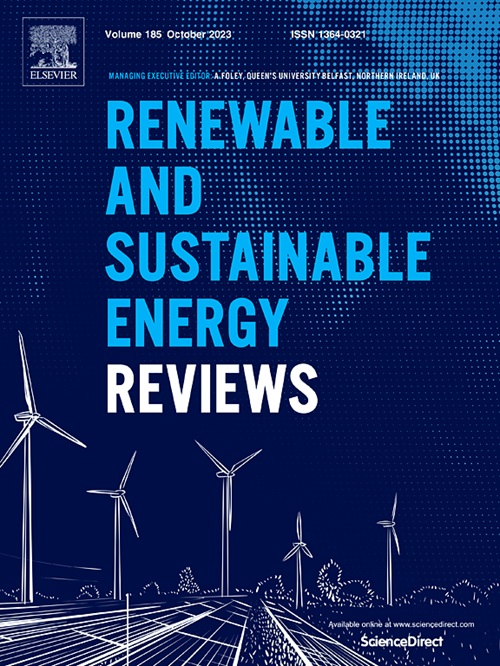Two-dimensional photocatalysts for photoreduction of CO2
IF 16.3
1区 工程技术
Q1 ENERGY & FUELS
引用次数: 0
Abstract
Photocatalytic CO2 reduction represents a forefront area of research with the potential to convert CO2 into the higher value-added products. Notably, within the process of photocatalytic CO2 reduction, the optimization of light absorption efficiency, photogenerated carrier separation and transport, and surface redox reactions remains imperative. Two-dimensional (2D) semiconductors demonstrate significant potential in advancing photocatalytic CO2 reduction. The bandgap of 2D materials can be modulated by altering the layers and element ratios during preparation, thereby allowing for adjustable light absorption efficiency. Additionally, the ultra-thin nature of these materials reduces the diffusion path of photogenerated electron-hole pairs from the interior to the surface, thereby expediting the charge transfer process. Furthermore, the 2D structure offers a higher specific surface area and abundance of unsaturated coordination atoms on the surface, thus providing more active sites. In this review, we firstly introduce the photocatalysis process in 2D semiconductors, and the advantages of 2D materials are detailed stated. Subsequently, the synthesis strategies are well elaborated. Finally, the mechanisms and promoting strategies of various typical 2D photocatalysts are reviewed. With a prospective outlook, combined with machine learning, high-quality resource integration strategies may significantly advance the development of 2D semiconductors in photocatalytic CO2 reduction.
CO2光还原的二维光催化剂
光催化CO2还原是研究的前沿领域,具有将CO2转化为高附加值产品的潜力。值得注意的是,在光催化CO2还原过程中,光吸收效率的优化、光生载流子的分离和输运以及表面氧化还原反应的优化仍然是必不可少的。二维(2D)半导体在推进光催化CO2还原方面显示出巨大的潜力。二维材料的带隙可以通过在制备过程中改变层和元素比例来调节,从而允许可调的光吸收效率。此外,这些材料的超薄性质减少了光生电子-空穴对从内部到表面的扩散路径,从而加速了电荷转移过程。此外,二维结构提供了更高的比表面积和表面不饱和配位原子的丰度,从而提供了更多的活性位点。本文首先介绍了二维半导体的光催化过程,并详细阐述了二维材料的优点。随后,对综合策略进行了详细阐述。最后,综述了各种典型二维光催化剂的作用机理和促进策略。展望未来,结合机器学习,高质量的资源整合策略可能会显著推动二维半导体在光催化CO2还原中的发展。
本文章由计算机程序翻译,如有差异,请以英文原文为准。
求助全文
约1分钟内获得全文
求助全文
来源期刊

Renewable and Sustainable Energy Reviews
工程技术-能源与燃料
CiteScore
31.20
自引率
5.70%
发文量
1055
审稿时长
62 days
期刊介绍:
The mission of Renewable and Sustainable Energy Reviews is to disseminate the most compelling and pertinent critical insights in renewable and sustainable energy, fostering collaboration among the research community, private sector, and policy and decision makers. The journal aims to exchange challenges, solutions, innovative concepts, and technologies, contributing to sustainable development, the transition to a low-carbon future, and the attainment of emissions targets outlined by the United Nations Framework Convention on Climate Change.
Renewable and Sustainable Energy Reviews publishes a diverse range of content, including review papers, original research, case studies, and analyses of new technologies, all featuring a substantial review component such as critique, comparison, or analysis. Introducing a distinctive paper type, Expert Insights, the journal presents commissioned mini-reviews authored by field leaders, addressing topics of significant interest. Case studies undergo consideration only if they showcase the work's applicability to other regions or contribute valuable insights to the broader field of renewable and sustainable energy. Notably, a bibliographic or literature review lacking critical analysis is deemed unsuitable for publication.
 求助内容:
求助内容: 应助结果提醒方式:
应助结果提醒方式:


